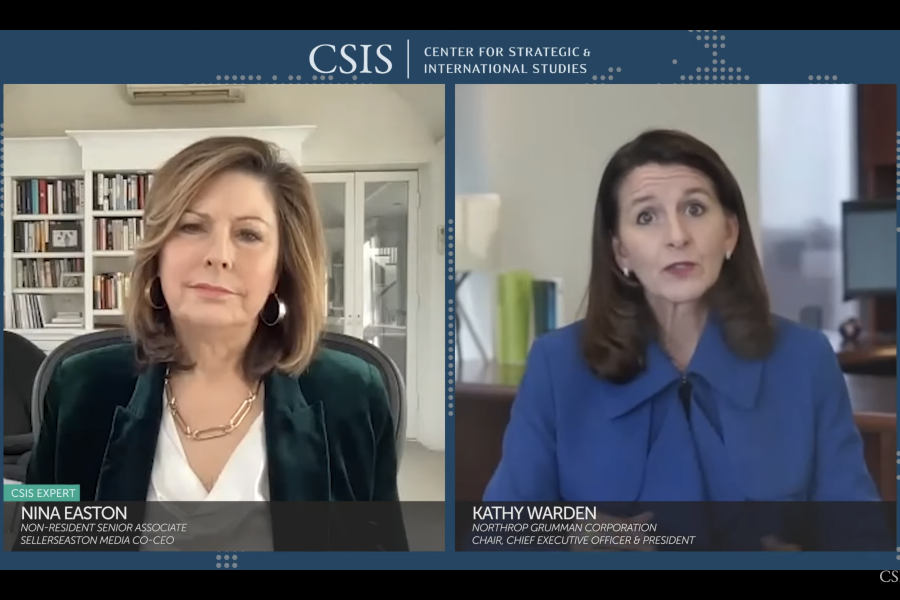Northrop Grumman CEO Kathy Warden sees even more consolidation among top-tier defense contractors in the next 20 years, but the reduction in traditional firms will likely be offset by a surge in new entrants, particularly in the cyber and space domains, she said on Feb. 9.
Speaking during a Center for Strategic and International Studies virtual event, Warden says she sees more industry teaming and government-industry partnerships to “evolve technologies more rapidly” over the next 10 to 20 years.
“As a result, I believe the industry will look different in terms of its composition,” said Warden, who also serves as the chair of the Aerospace Industries Association. “… It’s hard to say there will be fewer players, but the ones that exist today will likely continue to consolidate, as we have seen in recent years, and we’ve seen in other cycles over the decades. But you also have new entrants, particularly in areas like cyber and space that are more rapidly growing and creating the room for new players.”
Warden said she agrees with the consensus view that defense spending under the Biden administration will likely flatten from “increases in the mid-single-digit range,” and there will be “a shift more to research and development and staying at the forefront of technology.” Priority areas are likely to be artificial intelligence, machine learning, and microelectronics, she said, along with advanced networking.
The stand-up of the Space Force under the Trump administration, which created both a space command and control function as well as a “space cadre,” was an important step, Warden said.
“Regardless of whether the Biden administration moves forward with the Trump plan and structure, it is important that the nation have this focus on space as a domain and builds the talent that’s necessary to lead, operate, and acquire systems for space,” she said.
The recent SolarWinds hack demonstrates that the cyber threat “has evolved to more and more sophisticated points of access,” Warden observed. It underscored that the old concept of building cyber perimeter defenses in the hopes of totally preventing penetration doesn’t work, and the U.S. has to shift to a new strategy.
“Over time, what all large entities have learned is that, even with the most sophisticated cyber defense forces and monitoring in place, new vulnerabilities are created, at such a rapid rate, that you can’t plan on keeping the adversary out of your network,” she said .
“So you have to protect the internal environment, … protecting the things that are most critical to the organization—data, people, assets—and …building higher walls, better defenses around those.”
Cyber technologies from industry will probably be borrowed intact, and the only ones unique to defense will be those “specifically applied to problems that are unique to surveillance [and] command and control; the issues of defense that aren’t translatable into a commercial context,” she said.
The COVID-19 pandemic was, “Certainly a wake-up call, not only for our company resiliency but our supply chain resiliency,” Warden noted. The industry is “working together” to ensure that the supply chain is resilient and can “adapt quickly” if another similar situation arises.
She said the Biden administration also will be looking at the defense industrial base and supply chain resiliency, and “defining some of the mitigation steps that we have to take together. And this really needs to be a government and industry partnership to shore up the broader ecosystem of the defense industrial base,” she said.
“We will see activity on this in the next few months,” she predicted. The AIA is making recommendations “that we can take forward to the administration, but [that] also work across the industrial base …” She said she’s proud of the steps the industry has already taken on its own in this regard.
“The larger corporations who had the financial means to keep operating,” and take appropriate safety measures, “very proactively reached out to smaller and midsize companies to help give them the information they needed to change their protocols to continue to operate. And in addition, we flowed funds to them,” so they had the “cash on hand to continue to operate in a pandemic.”
“I hope this is something industry can bottle and hold onto as we move forward, post-pandemic,” she added.
